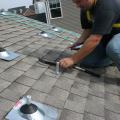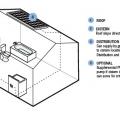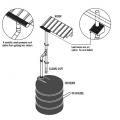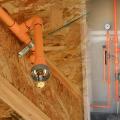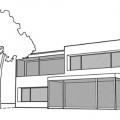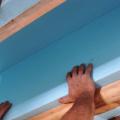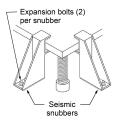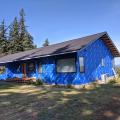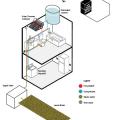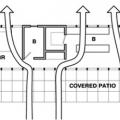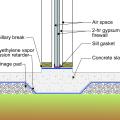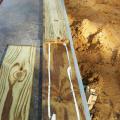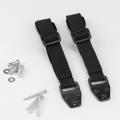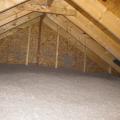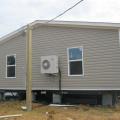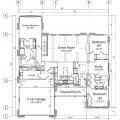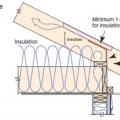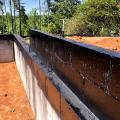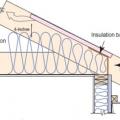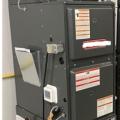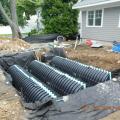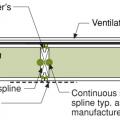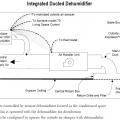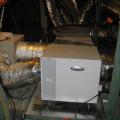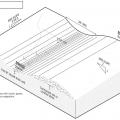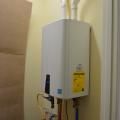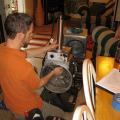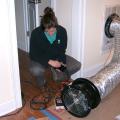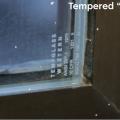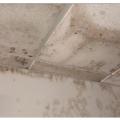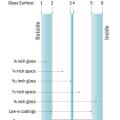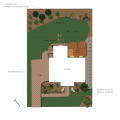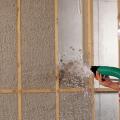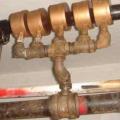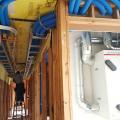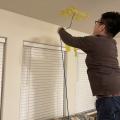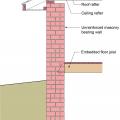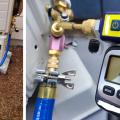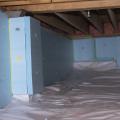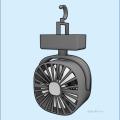Showing results 301 - 350 of 4973
A roof-mounted solar electric system can be sized to produce enough electricity to power the home and an electric car.
A roughed-in fire sprinkler head (left) and fire sprinkler riser (right), both using CPVC piping.
A screened-in porch will protect windows from rain, provide shade, and allow more airflow through windows than window screens would
A second layer of rigid insulation is installed over the 2 in. by 4 in. retaining strip
A seismic shut off valve with a stopper to cease the flow of gas to a property during the event of an earthquake.
A seismic snubber is a type of bracket specifically designed to anchor heavy equipment to the floor to restrain it in the event of an earthquake.
A self-adhering weather-resistant barrier is installed over the existing sheathing of this retrofit home to provide air sealing and a drainage plane before installing new metal and wood siding on the home.
A self-sufficient water system for a home could include a rooftop cistern and solar thermal water heater.
A shaded fuel break is created on forested lands when trees are thinned, tree canopies are raised by removing lower branches, and the understory vegetation is managed to reduce the fire threat.
A shallow, open floor plan allows free flow of cross ventilation through the house
A sill gasket is installed under the two layers of fire-rated gypsum providing air sealing at the foundation slab in this 2-hour fire wall separating two units in a multifamily row house building
A sill-sealing foam gasket is placed under 8-inch plywood base and two beads of caulk air seal the 2x6 sill plate to it; two more beads of caulk will top the 2x6 which will serve as a spline for the SIP wall panel.
A simple kit for anchoring a TV, appliance, or furniture to a wall may include straps, attachment hardware, and screws for attaching both to the appliance and to the wall
A simple vented attic with good air-sealing of the drywall ceiling air barrier, air flow from soffit vents to ridge vents protected by ventilation baffles, and lots of insulation covering the attic floor is unlikely to encourage ice dams.
A single ductless heat pump heats and cools the country’s first DOE Zero Energy Ready certified manufactured home.
A single-story house floor plan showing braced wall line locations at A through E and 1 through 5
A site-built rafter roof with a raised top plate allows for more insulation underneath.
A small, single-zone cooling system such as this ductless mini-split heat pump can be a very effective way to provide emergency cooling with a low power draw on a backup power system.
A solar tube provides more natural light while maintaining privacy for this bathroom.
A sprayer-applied waterproofing covers the grout-filled top course of concrete foundation blocks to prevent moisture migration from the ground into the framing.
A static pressure measurement is taken on this air handler using probes on the supply and return sides of the fan.
A storm water management system channels rainwater to retention chambers buried in the front yard.
A strip of OSB sheathing is installed along the perimeter when retrofitting a flat roof with a parapet
A structural spline made of a solid 2x is used where needed to meet structural load requirements at SIP panel seams
A supplemental dehumidifier is integrated with the home’s HVAC air handler to provide extra dehumidification when needed
A surface spline reduces thermal bridging much more than a structural spline at SIP panel seams
A swale and berm can be installed together across a slope to slow the downhill flow of water.
A technician assembles the spray sealant injection system to seal HVAC ducts from the inside
A tempered glass window can be identified by the “bug” or white etched label at one corner of the window.
A thermosiphon solar hot water system heats a fluid in the solar collector; the heated fluid heats potable water in a roof top tank.
A thin-triple window uses a narrow interior glass pane and narrower gaps between panels often filled with krypton, rather than argon gas, to achieve triple-pane performance with an IGU that fits in a double-pane window frame
A thoughtful landscaping plan can increase the beauty and functionality of outdoor spaces while reducing water usage.
A trained installer completely fills the wall cavities with sprayed cellulose insulation.
A triple-filtered energy recovery ventilator is installed with individual supply ducts to provide fresh air to each room.
A tube is installed in one of the supply registers and connected to the duct leakage test manometer to determine the pressure of the duct in reference to the inside.
A typical Las Vegas hot-dry climate home made of wood frame construction and insulated with R-25 expanded polystyrene externally over a drainage plane, with an unvented wood frame insulated attic and roof assembly.
A typical older masonry home with unreinforced brick walls, wood floors, and a wood roof
A vacuum decay test is performed on this ductless mini-split heat pump using a digital micron gauge for accurate measurement; a deep vacuum is achieved quickly by using large diameter, vacuum-rated hoses, and removing valve cores
A vapor barrier was installed on the floor of this crawlspace and extended up the walls then the foundation walls were covered with rigid foam.
A variety of battery-powered fans can be used for a cool room without electric power; most charge off a USB charger so they can be solar charged
